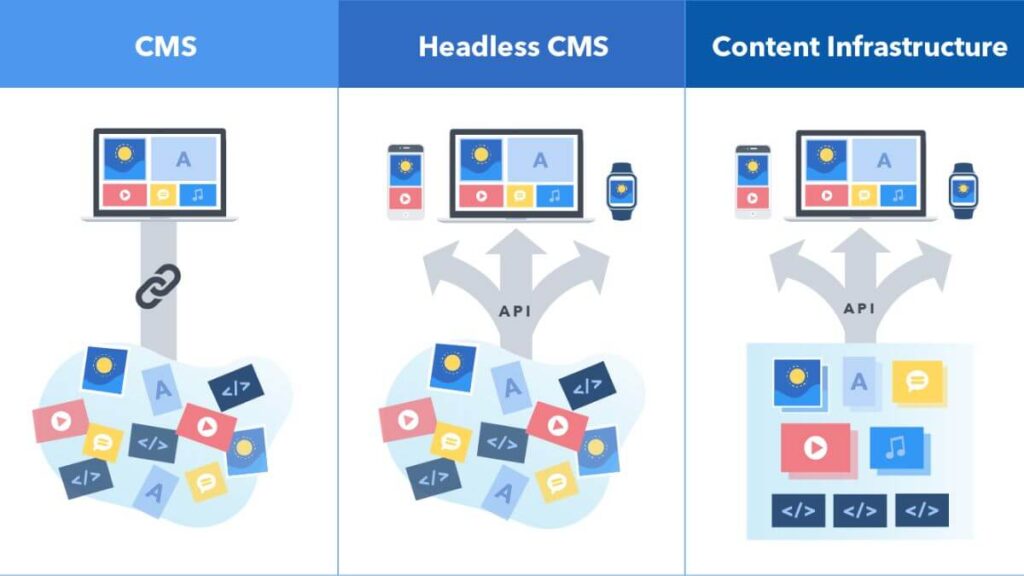What is CMS?
Before proceeding with Headless CMS let’s know about what is CMS, CMS stands for Content Management System. A CMS is software where users can create, manage, modify content on a website without the need for specialized technical knowledge.
What is Traditional CMS?
A Traditional CMS is where the frontend (presentation layer) and the backend (content database and edit interface) are directly connected. A traditional CMS is best seen in a blogging platform like WordPress.
What is Headless CMS?
It is a backed-end-only content management system. It acts as a content repository, where there is our website, apps, etc. You can access content via a RESTful API or GraphQL API to display on any device from a headless CMS.
Also read | Top 10 WordPress plugins to elevate your website
Advantages
As it gives us data via API, we can use it wherever we want, with any technology.
You can use it on any platform for example:
- iOS apps
- Android apps
- Website, etc.
The main advantage of headless CMS is:
- You can publish a piece of content, to multiple frontends and to multiple platforms at once.
- And also you get much more freedom and flexibility on both sides frontend and backend.
Also, learn:

